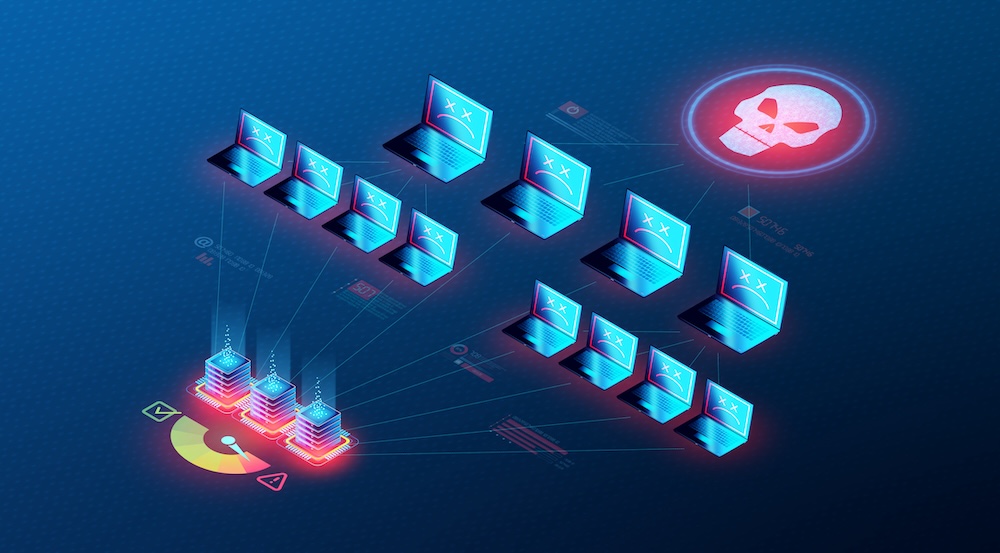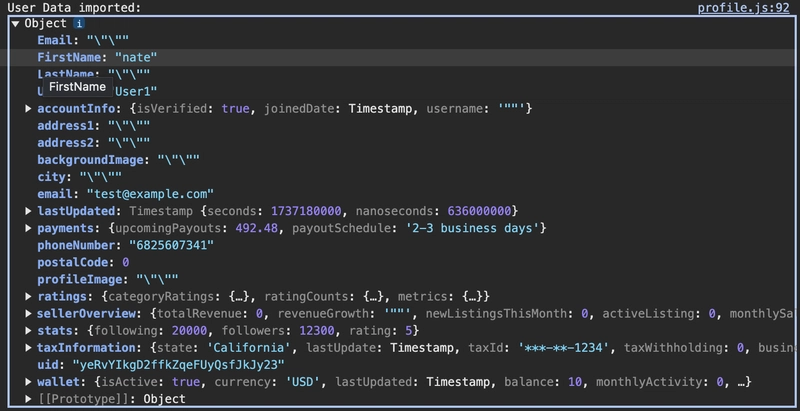Sustainable DevOps: Building a Greener Future
In today’s digital world, technology is advancing rapidly, but so is its impact on the environment. As businesses adopt cloud computing and automation, DevOps services have become a key driver for efficiency and innovation. However, with increasing energy consumption and carbon emissions from data centers, there is a growing need for Sustainable DevOps—a practice that integrates environmental responsibility into software development and IT operations. This blog explores the importance of Sustainable DevOps, its benefits, and real-world examples of companies leading the way in green computing. Why Sustainable DevOps Matters Traditional IT operations involve high energy consumption, excessive infrastructure usage, and inefficient workflows, leading to increased carbon footprints. Sustainable DevOps focuses on optimizing resources, automating processes, and adopting eco-friendly infrastructure to reduce environmental impact. Key Facts on IT Carbon Footprint Data centers consume about 1% of the world's electricity and contribute significantly to global carbon emissions. (Source: International Energy Agency) The ICT sector accounts for nearly 3% of global carbon emissions, equivalent to the aviation industry. (Source: The Shift Project) Efficient cloud computing and DevOps automation can reduce carbon emissions by up to 80% compared to on-premise infrastructure. By integrating DevOps as a Service, companies can reduce waste, optimize workloads, and build energy-efficient applications. Key Principles of Sustainable DevOps Cloud Optimization for Energy Efficiency Adopting cloud-native DevOps consulting services helps businesses scale applications efficiently while reducing unnecessary resource usage. Cloud providers like AWS, Azure, and Google Cloud offer sustainable computing solutions, including carbon-neutral data centers and AI-driven workload management. ✅ Example: Google Cloud operates with 100% renewable energy, reducing its carbon footprint while providing high-performance cloud services. Infrastructure as Code (IaC) for Resource Management Using Infrastructure as Code (IaC) ensures that resources are provisioned only when needed, reducing idle infrastructure and energy wastage. DevOps engineers leverage tools like Terraform, Ansible, and Kubernetes to automate infrastructure management and improve efficiency. ✅ Example: Airbnb reduced infrastructure costs by 27% using IaC to dynamically manage workloads based on real-time demand. Serverless and Containerization for Sustainability Serverless computing eliminates the need for always-on servers, allowing applications to run only when triggered, significantly reducing power consumption. Similarly, containerization (Docker, Kubernetes) enhances resource efficiency by running multiple workloads on a single host. ✅ Example: Netflix uses Kubernetes and serverless architectures to optimize its cloud infrastructure, reducing energy waste while handling billions of streaming requests. Automated CI/CD Pipelines for Efficiency Continuous Integration and Continuous Deployment (CI/CD) pipelines minimize manual intervention, reduce unnecessary computations, and optimize code deployment, leading to faster and more sustainable software releases. ✅ Example: Spotify implemented automated CI/CD pipelines, reducing infrastructure usage and cutting deployment-related energy consumption by 30%. Green Coding Practices Writing energy-efficient code helps reduce CPU cycles and power consumption. Best practices include reducing redundant computations, optimizing algorithms, and minimizing data storage. ✅ Example: Microsoft optimized its Azure data center software to reduce CPU usage by 20%, cutting energy consumption. How Companies Are Implementing Sustainable DevOps Amazon Web Services (AWS) AWS has committed to using 100% renewable energy by 2025. Its Sustainable Computing Initiative optimizes cloud operations to reduce energy waste, and tools like AWS Compute Optimizer help businesses minimize their infrastructure footprint. Facebook (Meta) Facebook’s data centers are carbon-neutral, using AI-driven cooling systems to optimize power usage. The company leverages DevOps services to monitor and reduce energy consumption in real time. Microsoft Azure Microsoft uses carbon-aware computing to schedule workloads when renewable energy availability is high, reducing its carbon footprint. It also offers AI-powered sustainability tools to help companies optimize their DevOps consulting services for greener computing. The Future of Sustainable DevOps As companies move toward net-zero emissions, integrating sustainability into DevOps as a Service will become a business priority rather than an option. Key future trends include: AI-driven workload optimization for real-time energy management. Carbon tracking tools embedded in DevOps workflows. Greater adoption of edge computing to reduce data transfer energy. Regulatory

In today’s digital world, technology is advancing rapidly, but so is its impact on the environment. As businesses adopt cloud computing and automation, DevOps services have become a key driver for efficiency and innovation. However, with increasing energy consumption and carbon emissions from data centers, there is a growing need for Sustainable DevOps—a practice that integrates environmental responsibility into software development and IT operations.
This blog explores the importance of Sustainable DevOps, its benefits, and real-world examples of companies leading the way in green computing.
Why Sustainable DevOps Matters
Traditional IT operations involve high energy consumption, excessive infrastructure usage, and inefficient workflows, leading to increased carbon footprints. Sustainable DevOps focuses on optimizing resources, automating processes, and adopting eco-friendly infrastructure to reduce environmental impact.
Key Facts on IT Carbon Footprint
Data centers consume about 1% of the world's electricity and contribute significantly to global carbon emissions. (Source: International Energy Agency)
The ICT sector accounts for nearly 3% of global carbon emissions, equivalent to the aviation industry. (Source: The Shift Project)
Efficient cloud computing and DevOps automation can reduce carbon emissions by up to 80% compared to on-premise infrastructure.
By integrating DevOps as a Service, companies can reduce waste, optimize workloads, and build energy-efficient applications.
Key Principles of Sustainable DevOps
- Cloud Optimization for Energy Efficiency Adopting cloud-native DevOps consulting services helps businesses scale applications efficiently while reducing unnecessary resource usage. Cloud providers like AWS, Azure, and Google Cloud offer sustainable computing solutions, including carbon-neutral data centers and AI-driven workload management.
✅ Example: Google Cloud operates with 100% renewable energy, reducing its carbon footprint while providing high-performance cloud services.
- Infrastructure as Code (IaC) for Resource Management Using Infrastructure as Code (IaC) ensures that resources are provisioned only when needed, reducing idle infrastructure and energy wastage. DevOps engineers leverage tools like Terraform, Ansible, and Kubernetes to automate infrastructure management and improve efficiency.
✅ Example: Airbnb reduced infrastructure costs by 27% using IaC to dynamically manage workloads based on real-time demand.
- Serverless and Containerization for Sustainability Serverless computing eliminates the need for always-on servers, allowing applications to run only when triggered, significantly reducing power consumption. Similarly, containerization (Docker, Kubernetes) enhances resource efficiency by running multiple workloads on a single host.
✅ Example: Netflix uses Kubernetes and serverless architectures to optimize its cloud infrastructure, reducing energy waste while handling billions of streaming requests.
- Automated CI/CD Pipelines for Efficiency Continuous Integration and Continuous Deployment (CI/CD) pipelines minimize manual intervention, reduce unnecessary computations, and optimize code deployment, leading to faster and more sustainable software releases.
✅ Example: Spotify implemented automated CI/CD pipelines, reducing infrastructure usage and cutting deployment-related energy consumption by 30%.
- Green Coding Practices Writing energy-efficient code helps reduce CPU cycles and power consumption. Best practices include reducing redundant computations, optimizing algorithms, and minimizing data storage.
✅ Example: Microsoft optimized its Azure data center software to reduce CPU usage by 20%, cutting energy consumption.
How Companies Are Implementing Sustainable DevOps
Amazon Web Services (AWS)
AWS has committed to using 100% renewable energy by 2025. Its Sustainable Computing Initiative optimizes cloud operations to reduce energy waste, and tools like AWS Compute Optimizer help businesses minimize their infrastructure footprint.
Facebook (Meta)
Facebook’s data centers are carbon-neutral, using AI-driven cooling systems to optimize power usage. The company leverages DevOps services to monitor and reduce energy consumption in real time.
Microsoft Azure
Microsoft uses carbon-aware computing to schedule workloads when renewable energy availability is high, reducing its carbon footprint. It also offers AI-powered sustainability tools to help companies optimize their DevOps consulting services for greener computing.
The Future of Sustainable DevOps
As companies move toward net-zero emissions, integrating sustainability into DevOps as a Service will become a business priority rather than an option. Key future trends include:
AI-driven workload optimization for real-time energy management.
Carbon tracking tools embedded in DevOps workflows.
Greater adoption of edge computing to reduce data transfer energy.
Regulatory compliance for sustainable IT practices (e.g., Carbon Disclosure Project).
By adopting Sustainable DevOps, businesses not only contribute to a healthier planet but also reduce costs, improve efficiency, and enhance brand reputation.
Conclusion
Sustainable DevOps is the future of IT operations, enabling businesses to balance innovation with environmental responsibility. By leveraging cloud optimization, automation, containerization, and green coding practices, organizations can minimize energy consumption and build eco-friendly software solutions.
Companies like Google, Microsoft, and Netflix have already demonstrated the impact of DevOps consulting services in driving sustainability. Now, it’s time for every business to integrate Sustainable DevOps into their IT strategy.
Looking to make your DevOps services greener? Get started with Cloudastra’s DevOps Solutions today





































































![Rapidus in Talks With Apple as It Accelerates Toward 2nm Chip Production [Report]](https://www.iclarified.com/images/news/96937/96937/96937-640.jpg)










































































































.webp?#)


_Christophe_Coat_Alamy.jpg?#)









































































![[The AI Show Episode 142]: ChatGPT’s New Image Generator, Studio Ghibli Craze and Backlash, Gemini 2.5, OpenAI Academy, 4o Updates, Vibe Marketing & xAI Acquires X](https://www.marketingaiinstitute.com/hubfs/ep%20142%20cover.png)
































































































































![From drop-out to software architect with Jason Lengstorf [Podcast #167]](https://cdn.hashnode.com/res/hashnode/image/upload/v1743796461357/f3d19cd7-e6f5-4d7c-8bfc-eb974bc8da68.png?#)






























-Nintendo-Switch-2-–-Overview-trailer-00-00-10.png?width=1920&height=1920&fit=bounds&quality=80&format=jpg&auto=webp#)








.png?#)

























































